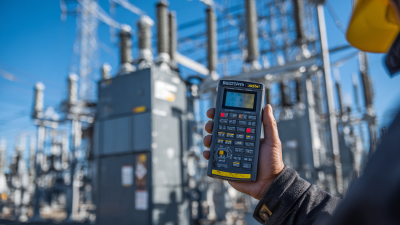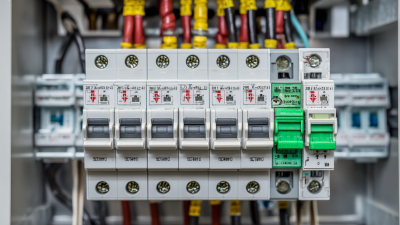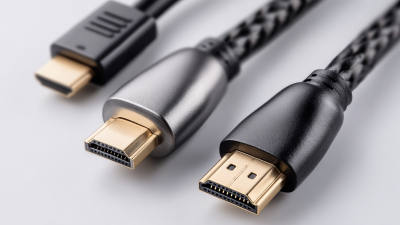The Rccm Breaker, or Residual Current Circuit Breaker with Monitoring, plays a critical role in modern electrical systems, significantly enhancing safety measures against electrical hazards. According to a report from the International Electrotechnical Commission, electrical accidents are responsible for approximately 5,000 fatalities annually worldwide, emphasizing the necessity of advanced safety mechanisms in energy distribution. The Rccm Breaker serves not only to protect individuals from electric shocks but also to prevent fire risks caused by faulty wiring or equipment failure. A study conducted by the National Fire Protection Association indicates that nearly 20% of electrical fires could be prevented by the implementation of appropriate circuit protection devices like the Rccm Breaker. As electrical installations grow increasingly complex, understanding the functionality and importance of the Rccm Breaker is vital for electrical professionals aiming to enhance safety in residential, commercial, and industrial settings.

 Residual Current Circuit Breakers (RCCBs) play a critical role in enhancing electrical safety within modern systems. According to a report from the National Fire Protection Association (NFPA), electrical failures are responsible for over 50,000 house fires annually in the United States, highlighting the urgent need for effective safety measures. RCCBs are designed to detect imbalances in electrical currents, automatically disconnecting circuits when leakage is detected, thus preventing potential electrocutions and electrical fires.
Residual Current Circuit Breakers (RCCBs) play a critical role in enhancing electrical safety within modern systems. According to a report from the National Fire Protection Association (NFPA), electrical failures are responsible for over 50,000 house fires annually in the United States, highlighting the urgent need for effective safety measures. RCCBs are designed to detect imbalances in electrical currents, automatically disconnecting circuits when leakage is detected, thus preventing potential electrocutions and electrical fires.
In a study conducted by the International Electrotechnical Commission (IEC), it was found that the integration of RCCBs can reduce electrocution risks by up to 80%. This statistic underscores the importance of implementing RCCBs in both residential and commercial electrical systems. Furthermore, the market for RCCBs is expected to grow significantly, driven by increasing safety regulations and the adoption of smart home technologies. As modern electrical systems become more complex, the necessity for reliable protections like RCCBs becomes imperative for safeguarding lives and property, making them a cornerstone of electrical safety measures today.
RCCB (Residual Current Circuit Breaker) breakers play a crucial role in modern electrical systems by providing essential protection against electric shock and fire hazards caused by earth faults. These devices are designed to detect imbalances in electrical currents, which may indicate a leakage of current to the ground. When such an imbalance is detected, an RCCB will quickly disconnect the circuit, thereby preventing potential injuries and property damage. This swift response is vital, especially in environments where water and electricity coexist, like kitchens and bathrooms.
Key features of RCCB breakers include their ability to operate independently of the circuit's load conditions, making them highly effective in various applications. They are typically rated in terms of the current sensitivity they can detect, measured in milliamperes (mA). Common ratings include 30 mA for personal protection and 100 mA or higher for equipment protection. Additionally, many RCCBs feature a test button that allows users to verify the functionality of the device regularly.
This feature is crucial for maintaining safety standards in residential and commercial electrical systems, ensuring that the RCCB remains operational and effective in protecting users against electrical hazards.
Installing RCCB (Residual Current Circuit Breaker) breakers is crucial for ensuring safety in modern electrical systems. To begin, it is essential to gather all necessary tools and equipment, including a voltage tester, screwdriver, wire cutters, and appropriate cable connectors. Make sure to turn off the main power supply to avoid any electrical shocks during installation.
Next, identify the location where the RCCB will be installed, typically in the consumer unit or distribution board. Carefully remove the cover of the board and position the RCCB in the designated space. Connect the live and neutral wires from the incoming supply to the correct terminals on the RCCB. It is important to ensure that the connections are secure and that there are no exposed wires. After double-checking all connections, replace the cover of the distribution board and restore the power supply. Finally, test the RCCB by pressing the test button to verify that it trips correctly, confirming that the installation has been successful and that the electrical system is now better protected against faults.
Residual Current Circuit Breakers (RCCBs) play a crucial role in modern electrical systems by providing a layer of safety against electrical shocks and preventing fire hazards. However, like any electrical component, RCCBs can develop issues that affect their performance. Common problems include nuisance tripping, failure to reset, and an inability to trip during a fault. Nuisance tripping often occurs due to transient surges or electrical noise, which can mislead the device into detecting a fault when there isn’t one.
Troubleshooting these issues begins with identifying the root cause. For nuisance tripping, inspecting connected appliances and circuit loading is essential. If the RCCB fails to reset, it may indicate a persistent fault or internal failure of the breaker. In such cases, checking the connections and testing the circuit for continuity can help diagnose the problem. Lastly, if the RCCB does not trip during an actual fault condition, it could suggest that the device is faulty and should be replaced to ensure safety. Regular testing, maintenance, and understanding these issues are vital for optimal performance and safety in electrical systems.
Regular maintenance of Residual Current Circuit Breakers (RCCBs) is crucial for ensuring safety in modern electrical systems. According to a 2022 report by the International Electrotechnical Commission, around 30% of electrical fires could be prevented by the proper functioning of RCCBs. These devices not only protect against electrocution and electrical shocks but also play a vital role in minimizing the risk of electrical fires caused by earth faults.

To maintain RCCB breakers effectively, it is essential to implement best practices such as periodic testing and inspection. The National Fire Protection Association recommends testing RCCBs at least once every three months by using the test button on the device. Additionally, regular professional inspections can help identify any wear or failure in the device, which could otherwise go unnoticed. Ensuring that all installations comply with local electrical codes and standards further enhances safety and reliability in electrical systems. This proactive approach not only safeguards property and lives but also ensures compliance with regulations, thus avoiding potential legal liabilities.






